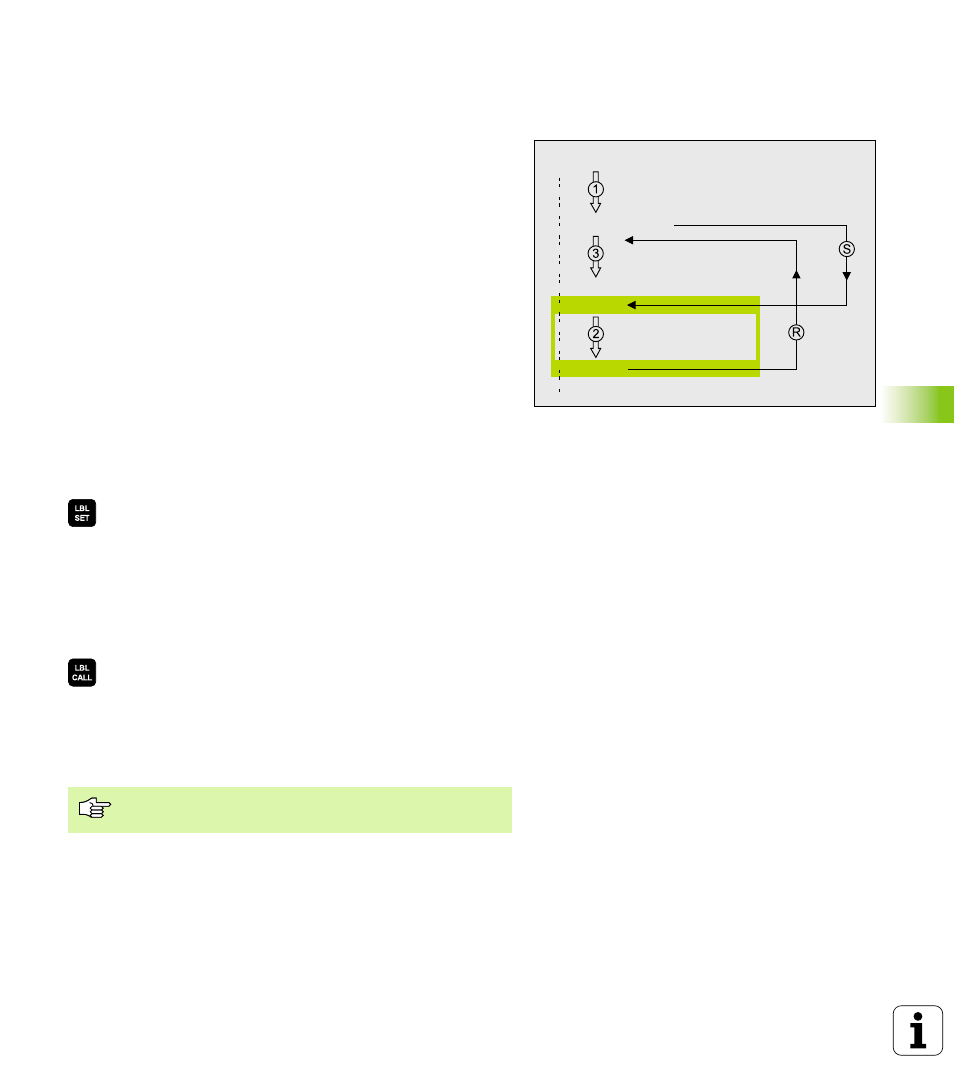2 subprograms, Operating sequence, Programming notes – HEIDENHAIN TNC 426 (280 476) User Manual
Page 370: Programming a subprogram, Calling a subprogram, 2 subpr ogr a ms 9.2 subprograms

HEIDENHAIN TNC 426, TNC 430
343
9.2 Subpr
ogr
a
ms
9.2 Subprograms
Operating sequence
1
The TNC executes the part program up to the block in which a
subprogram is called with CALL LBL.
2
The subprogram is then executed from beginning to end. The
subprogram end is marked LBL 0.
3
The TNC then resumes the part program from the block after the
subprogram call.
Programming notes
n
A main program can contain up to 254 subprograms.
n
You can call subprograms in any sequence and as often as desired.
n
A subprogram cannot call itself.
n
Write subprograms at the end of the main program (behind the block
with M2 or M30).
n
If subprograms are located before the block with M02 or M30, they
will be executed at least once even if they are not called.
Programming a subprogram
7
7
7
7
To mark the beginning, press the LBL SET key and
enter a label number.
7
7
7
7
Enter the subprogram number.
7
7
7
7
To mark the end, press the LBL SET key and enter the
label number “0”.
Calling a subprogram
7
7
7
7
To call a subprogram, press the LBL CALL key.
7
7
7
7
Label number:
Enter the label number of the
subprogram you wish to call.
7
7
7
7
Repeat REP:
Ignore the dialog question with the NO
ENT key. Repeat REP is used only for program section
repeats.
0 BEGIN PGM ...
CALL LBL1
L Z+100 M2
LBL1
LBL0
END PGM ...
CALL LBL 0 is not permitted (label 0 is only used to mark
the end of a subprogram).
